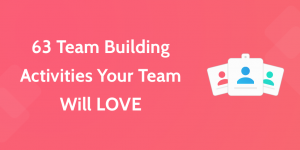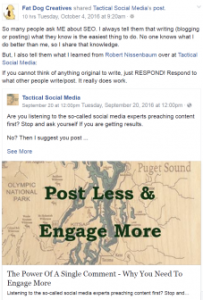Search engine optimization is an accumulation of strategies and techniques used to increase the number of visitors to a website by obtaining a high ranking in search results. An important feature of SEO is making your website intelligible for both users and search engine robots.
SEO helps the engines figure out what a particular page is all about, and how it may be useful for users. In today’s high level of competition, it is imperative to be as high as possible in the search results, and that comes with an efficient SEO strategy. However, many aren’t sure of how to rank a new website on Google.
Although search engines are highly sophisticated, they still have virtual limitations that a human brain doesn’t @positionly
Click to tweet
Let’s have a look at the two types of SEO: On-page SEO and Off-page SEO.
ON-Page SEO
On-page SEO is the practice of optimizing individual pages in order to obtain a higher ranking and earn more relevant organic traffic. In this piece, you will find different tips about On-page SEO:
1. Start title tags with your target keyword:
You company/product may be right up on the Google search results page with the appropriate keyword, channeling a huge amount of traffic to your website. On the contrary, a misadvised or inappropriate keyword can make your site’s chance towards prominence more remote than ever.
The title of the article defines its content, and as such, a keyword rich title holds greater weight with Google. In general, the closer the keyword is to the beginning of the title tag, the more weight it has with search engines. You can see this in action by searching for the competitive keyword in Google.
As you can see, most pages that rank for competitive keywords strategically place them at the beginning of their title tags. Although not mandatory, it’s prudent to do so as it will make your website more relevant to what people search for.
2. Drop Keyword in first 100 words:
The ideal place to start putting keywords in an article is within the first 100 words. There are many to whom these come naturally, but a large number of bloggers prefer a long intro before bothering with a keyword. This is inadvisable because of the obvious reasons that Google wouldn’t find it very relevant in the search results. Here is an example from Positionly:

A keyword “content marketing” was used at the very beginning of the article. Placing a keyword near the beginning of the article ensures that Google has an easier time in understanding the topic and relevance of the article.
3. Use Outbound Links:
Outbound links are the primary source of bringing more attention to your website. There are a lot of people who make the mistake of not including links to other websites/articles.
Outbound links show Google that the article is both valid and informative and both are vital requisites for ranking. Therefore, make sure that if you aren’t doing so, add outbound links to each of your articles. Just make sure that the links are relevant enough to your content and from authentic and high-quality sources.
4. Write click-worthy meta descriptions for each page:
Meta descriptions are one of the most important and visible elements – next to your title tag and URL- that convince people to click through.
If you want traffic on your latest article and efficiently on your website, make sure that the meta descriptions are attractive and informative. They should arouse the viewer’s curiosity within the 150-word limit.

Remember that YOU too click on a particular result after reading it’s meta description. The same mentality extends to your audience. Pay attention to the meta descriptions, and you will naturally see the results.
5. Put your target keyword in the URL:
As keywords are essentially the backbone of on-page SEO, you need to pay a lot of attention to them. There is no reason not to include them in your URLs. The inclusion has its benefits. When you assimilate the targeted keyword into the URL, you are ensuring that Google’s has another reason and way to consider your article as more relevant for a particular phrase.

6. Add keywords to your post strategically:
Strategical keyword placement is critical to a post’s success and net traffic on a website. As search engines continually become more refined, it is not enough just to randomly stuff articles with keywords and hope for relevance in the search results.
Please look how the Content Marketing Institute has optimized one of their blog posts with a relevant keyword – content marketing.

Strategic placement of said keywords is now paramount to your SEO success. Note: Don’t force keywords. Insert them where they make sense.
7. Post Long Content:
Studies have shown that longer content helps to improve ranking on Google. A target of around 2000 words should be set in every article with a minimum of 1000 words at least. This would inevitably result in long-tail traffic which would boost your site’s exposure.
Longer content not only helps in adding more keywords to it, but there is also a natural emphasis on information. The authenticity of a post increases with longer text, which means that Google would recognize it as something more relevant than a shorter and concise text. As search patterns are synonymous with long tail keywords nowadays, a longer text also improves the chances of your article/website to be on a higher ranking than others.
The authenticity of a post increases with longer text, which means that Google would recognize it as something more relevant than a shorter and concise text. As search patterns are synonymous with long tail keywords nowadays, a longer text also improves the chances of your article/website to be on a higher ranking than others.
While writing an article that you want to grasp people’s attention with, you must remember to research well before writing the first word. Make sure that all the relevant information is available to you before you start. Good research results in flair, which results in long and comprehensive writing.
Additionally, grammar should be impeccable. Articles riddled with errors indicate incompetence and carelessness.
The perfect piece is both elaborate and grammatically accurate.
8. Take Advantage of Internal Linking:
Internal linking is critical to decreasing a website’s bounce rate and optimization as it links to the different pages of a domain together. When link juice is spread, the users/viewers stay on the website longer and the site traffic also increases. It improves the navigational experience for the user.
Not to mention that it will also contribute to decreasing the bounce rate of your website.
Bounce rate is measured by how many users visit only one page and then leave the entrance page. Easy and accessible internal linking will naturally decrease this as users will be directed to other relevant articles.
Also, Google bots are designed to emulate user behavioral patterns and evaluate your website. A smart and efficient network of links on the pages help crawlers find regions which are not frequently visited by the users, thus boosting your site’s ranking.
Wikipedia is adept at using internal linking which is evident whenever you visit one of their pages.
They add keyword-rich internal links to every entry.

However, don’t overdo it. I recommend a simpler (and safer) approach; link to 2-4 older posts whenever you publish a new one.
9. Image Optimization:
Ensure that the pictures on your website have file names which include the target keyword. Also, your target keyword should be part of your image’s Alt Text. This will improve optimization for your article and also create a clearer picture for the search engines to the relevancy of your article/page. Images are an important component of any website as they make pages visually attractive as well as informative. Optimizing your images should naturally boost your ranking. Also, your image will get a high rank in Google image search.
10. Target less competitive – longtail keywords:
Long tail keywords are queries that are more specific (and usually longer) than more conventional “head” keywords.
Long tail keywords get less search traffic, but will usually have a higher conversion value, as they focus on a more specific product.
source
Long tail keywords are more targeted and less competitive than short term keywords. If you have just started your SEO campaign for a brand new website, then I would definitely recommend concentrating on long-tail keywords.

Why?
The truth is that you can’t have your new website ranked with a single word keyword. Trying to optimize your new blog to rank for “SEO” is hardly possible.
Take a look at the Google results for this keyword.
As you can see in the above image, Search Engine Land and Wikipedia are ranking for the keyword SEO. There are 51,70,00,000 search results for this single phrase. It’s a huge number.
Should you give up and quit?
Of course not! This is where the long-tail keywords and proper page optimization come into play.
Target long tail versions of the single word keyword “SEO.”
For example, You can target “basic SEO tips for beginners” in your new SEO campaign. This long tail keyword is less competitive than “SEO.”
Have a look:

Two things to remember are to make the keyword as long as possible and to use Google’s keyword planner to find a relevant keyword for future references.
The question of how to improve search engine ranking is very common, but many of us overlook the significance of keywords as a major contributor to traffic and ranking.
11. Use LSI keywords in your body content:
LSI keywords are the synonyms and variations of your main keywords which may be in the form of a phrase or word. Latent semantic indexing(LSI) keywords are part of Google’s algorithm to understand user search habits and give users the best quality content for their search queries.
The question is: How will you find those LSI keywords?
That’s really simple.
Say your main keyword is “on page SEO techniques.”Go to Google and search for your target keyword and scroll down to the “Searches Related to…” area at the bottom of the page:

LSI Graph and Google Trends are tools you may also use for this purpose.
12. Ensure your site is super fast:
A slow website is not only bad for the end-user, but also for search engine optimization.
Thus, a slow website can cause your site to rank lower in the search engine results. That translates to fewer page views and less ad revenue or customer conversions for you. There are a number of ways to optimize a site for better speed.
First of all, you should upgrade your hosting plan and rethink the plan you started with when you first launched your website.
VPS hosting is probably the option you want to go with. It’s “in the cloud,” meaning it is distributed over multiple computers, sometimes even hundreds. It’s less expensive and more flexible than Dedicated Servers.
Understanding HTTP requests is another way to boost site speed as too many requests invariably slow down a page.
Next, use Photoshop or Gimp to optimize pictures you wish to add to your web page as the larger the images, the slower the site speed. You may change the resolution without wholly sacrificing on picture quality, and this will keep your site interesting as well as smooth.
Plugin clutter significantly slows down site performance by creating too many extra files, thus increasing load time.
It’s best to avoid the use of plugins whenever possible, and though it’s not ideal to get rid of them altogether, there are ways to reduce the overall count.
Regularly review plugins and use alternatives like adding links to your footers whenever possible.
Aside from taking up space, outdated WordPress plugins are often responsible for security vulnerabilities as it’s a third party code package.
So try and minimize on plugins both for speed and security.
Finally, page caching, where web pages store data, allows visitors to access that page more quickly since the database does not have to retrieve each file again.
13. Your website must be mobile friendly:
Mobile-friendly websites should display on mobile devices like smartphones and tablets in a user-friendly way. This implies that when a user pulls the site up on their smartphone, he or she does not have to pinch and zoom in order to read the content and click on links.
This makes it easy to read and easy to use on a smartphone, eliminating any excess effort.
The recommended Google setup is Fluid Responsive Design.
Responsive design describes a website that dynamically resizes to fit the width of the device or browser that it is being displayed on. Responsive design uses a single code base that works across hundreds of devices. Naturally, more mobile friendliness equates to more viewers which means more traffic on your site.

Use the Mobile-Friendly Test tool by Google to see if pages on your site are mobile-friendly or not.
Off-page SEO
Off-page SEO refers to the techniques that go beyond a website. People associate off-page SEO with link building, however, it is more than that. The different tips related to this are:
14. Build high-quality backlinks only:
Link building is the most important – and the most challenging – SEO strategy. The truth is, without any high-quality backlinks, your website won’t rank for competitive and high traffic keywords.
The websites with the most valuable and relevant backlinks will ultimately rank over the rest. But, the tricky part is how you will get those quality backlinks? Well, today I’m going to show you one of my favorite tactics to get the high-quality backlinks.
15. Broken link building:
Broken link-building tactic is about identifying broken links on websites from your business niche. The main aim is to get the broken link replaced with an active one pointing to your content.
This technique creates a significant opportunity for SEO link building because nobody wants to have broken links on their website.
If you find any broken links on topically related websites, you can immediately contact the website owner and inform him about it. Since you will do him a favor by pointing out a broken link, you can also kindly request a replacement with a link to your relevant resource. Of course, the replacement – your article – must be informative and useful for their audience.
Now, the question is, how to automate the process of finding broken links? You need a tool to do this. In my experience, the best free tool to use for broken link building is Check My Links.
It’s a simple Google Chrome extension. First, you have to install the extension in your Google Chrome browser. Once installed, it will appear as a little checkmark icon beside your address bar. When you click on it, it will immediately start scanning all the links on a particular web page. If a link is broken or dead, it will be highlighted in red, and the error will be shown right beside the text (e.g., “404”).

Let’s say you have a website on “virtual assistance.” Go to Google and search with one of the following search strings.
virtual assistant intitle:resources virtual assistant inurl:resources virtual assistant inurl:useful links virtual assistant + “useful links” virtual assistant + “resources”
You would get similar results like this:

To detect broken links, open all the results one by one and scan each page using Check My Links plugin. Once you find one, write an email to the website owner about the dead link and kindly request to replace it with your active page.
15. Skyscraper technique:
The skyscraper technique is a popular and effective method, introduced by Brian Dean, to improve search rankings and boost the relevance of your website.
It involves three steps:
Find a linkable asset that you can use again and again, an asset which is both informative and awesome. Authenticity is the ‘name of the game’ here.
Then improve on what exists by making the content longer with more relevant keywords.
Finally, reach out to the right people: those who work in your niche and have websites similar to yours. Rather than sending random cold emails, it’s better to reach out to those who actually have a reputation in the business. Linking to their pages will give you a big boost in traffic.
16. Guestographics method:
Another link building technique that uses infographics. With this method, instead of publishing an infographic and begging other people to share it, you’re pushing them to release it on their site in exchange for unique content.
The complete steps are:
Step 1: Post an infographic on your site
Step 2: Find sites that write about your infographic’s topic
Step 3: Show them your infographic
Step 4: Offer them unique content
Step 5: Get your contextual backlinks in return
17. Guest post on relevant blogs
The benefits of guest blogging are clear:
- You land backlinks from authority sites.
- People look up to you as an expert.
- Targeted referral traffic floods to your site.
a. Finding blogs to guest post via Google search strings:
Here are a few search strings:
– write us “your topic.”
– your keyword + “guest post by.”
Say your topic is the virtual assistant. Go to Google and search for “virtual assistant” + “guest post by“
Also, you can use Google reverse image search, utilize Twitter and Google to find more posts, and go to alltop.com which has a complete list of the best blogs on the net.
b. Researching your target bloggers is important when you have to separate the winners from the losers and cozy up to them by engaging them on Twitter/Facebook or via emails.
c. Find a great and appropriate topic to write a guest post about. For example, a meat-related post on a vegan blog site is going to get rejected so it’s important to know what you are dealing with.
d. Have a great pitch ready to persuade bloggers to allow you to write for the guest post for them.
e. The final step is to follow up on any and all comments promptly and comprehensively.
18. Answer on Quora:
Quora is a website where users generate the content entirely. They post questions via threads and other users answer them. It’s basically a yahoo answers type social network that works like an internet forum. Both threads and answers can receive “upvotes” which signify the answer was worthy and popular. The answers with the most upvotes are put at the thread’s top.
Quora is great for:
- Websites that rely on traffic for revenue (Ad publishers, affiliate sites, content publishers).
- Websites that sell information products.
- Websites that sell products (SEO tools, children’s sneakers, coffee grinders).
- Bloggers that want to establish themselves as an authority on their subject matter.
19. Blog commenting:
Commenting on blogs helps to create backlinks, which in turn create traffic for your blog. Most of these links are worthless and thus carry little value, but the process is still helpful. For new blogs, comments – user generated content – will help get a website indexed faster. Commenting helps drive referral traffic to your blog.
However, it is important to post a valuable comment. Regular commenting is the best way to connect with any blogger personally. While it can take the time to create these connections, you will be noticed by the site’s administrator and other co-bloggers which can be profitable in the long run.
20. Link roundups
Link roundups are selected and organized updates from bloggers that link out to their favorite content during a given period. Roundups are mutually beneficial relationships. It’s really hard to curate content as it involves a lot of work. The bloggers creating these roundups are actively seeking content to link to. You can land links in bunches. Over time, you will gain roundup coverage naturally. After you pitch the blogger who curates the roundup, you should connect on social media. That way, they’ll discover your future updates naturally. I’ve gained some backlinks from link roundups.
20. Be active on social media
Although Google doesn’t hold much stock in social media as far as ranking is concerned, you can actually improve your site’s popularity and traffic by being active on Facebook, Google+ or Twitter. The more you post links to your blogs on social networks, the higher the chance people will visit your blog, thus increasing traffic.
21. Promote your new blog
Promoting your blogs is important to let people know of its existence and to improve traffic. The more you promote, the better your blog’s relevance is displayed and popularity soars. Before publishing your new piece of content, reach out to an influential blogger in your industry. Once your content is published, share it on social media and mention the people you’ve referenced. Anytime you mention someone, include a link to someone’s article and inform that person by sending an email.
With LinkedIn, you can get in an influential bloggers inbox even if you don’t have their email address. Contact people who have shared similar content to the item you just published and if possible, turn the content into a video to appeal to an entirely different audience.
22. Stay updated with Google’s algorithm
Google updates its search algorithm frequently. For example, on February 23rd, 2016, Google made significant changes to AdWords, removing right-column ads entirely and rolling out 4-ad top blocks on many commercial searches. While this was a paid search update, it had significant implications for CTR for both paid and organic results, especially on competitive keywords.
These kinds of changes must be understood to plan a strategy regarding site ranking.
23. Follow Google’s guidelines
These quality guidelines cover the most common forms of deceptive or manipulative behavior, but Google may respond negatively to other misleading practices not listed here.
It’s not safe to assume that just because a specific deceptive technique isn’t included on this page, Google approves of it.
Make pages primarily for users, not for search engines. Don’t deceive your users. Avoid tricks intended to improve search engine rankings. A good rule of thumb is whether you’d feel comfortable explaining what you’ve done to a website that competes with you, or to a Google employee.
Other useful questions to ask: “Does this help my users? Would I do this if search engines didn’t exist?” Think about what makes your website unique, valuable or engaging. Make your site stand out from others in your field.”
These guidelines are absolute as Google is the most popular and efficient search engine out there. While you use its services, it’s only prudent to follow the guidelines to the letter.
Conclusion
To conclude, web pages may very well be critical to our businesses and recognition, but it’s the keywords and more importantly, the ranking which make us significant or otherwise.
To maintain a name in the industry, it’s important that your website is relevant to the user’s search criteria.
If you are wondering on how to get a brand new website ranked, remember the 23 methods mentioned in this article are essential to that end. To sum it up, what Google deems significant or reliable is what the public accepts.
Anything I missed? Please write it down in the comment section.
(75)







